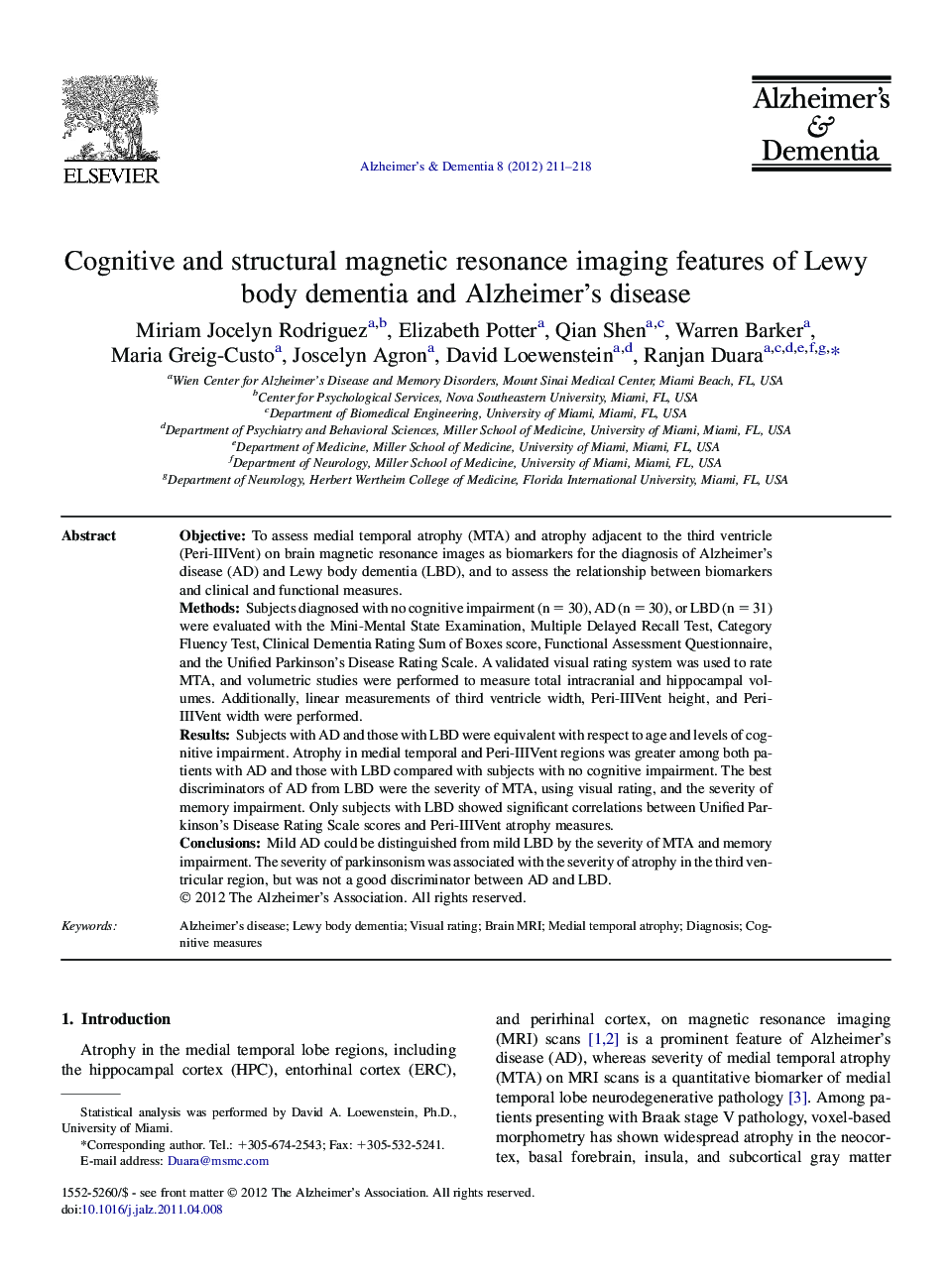| Article ID | Journal | Published Year | Pages | File Type |
|---|---|---|---|---|
| 5624987 | Alzheimer's & Dementia | 2012 | 8 Pages |
ObjectiveTo assess medial temporal atrophy (MTA) and atrophy adjacent to the third ventricle (Peri-IIIVent) on brain magnetic resonance images as biomarkers for the diagnosis of Alzheimer's disease (AD) and Lewy body dementia (LBD), and to assess the relationship between biomarkers and clinical and functional measures.MethodsSubjects diagnosed with no cognitive impairment (n = 30), AD (n = 30), or LBD (n = 31) were evaluated with the Mini-Mental State Examination, Multiple Delayed Recall Test, Category Fluency Test, Clinical Dementia Rating Sum of Boxes score, Functional Assessment Questionnaire, and the Unified Parkinson's Disease Rating Scale. A validated visual rating system was used to rate MTA, and volumetric studies were performed to measure total intracranial and hippocampal volumes. Additionally, linear measurements of third ventricle width, Peri-IIIVent height, and Peri-IIIVent width were performed.ResultsSubjects with AD and those with LBD were equivalent with respect to age and levels of cognitive impairment. Atrophy in medial temporal and Peri-IIIVent regions was greater among both patients with AD and those with LBD compared with subjects with no cognitive impairment. The best discriminators of AD from LBD were the severity of MTA, using visual rating, and the severity of memory impairment. Only subjects with LBD showed significant correlations between Unified Parkinson's Disease Rating Scale scores and Peri-IIIVent atrophy measures.ConclusionsMild AD could be distinguished from mild LBD by the severity of MTA and memory impairment. The severity of parkinsonism was associated with the severity of atrophy in the third ventricular region, but was not a good discriminator between AD and LBD.
